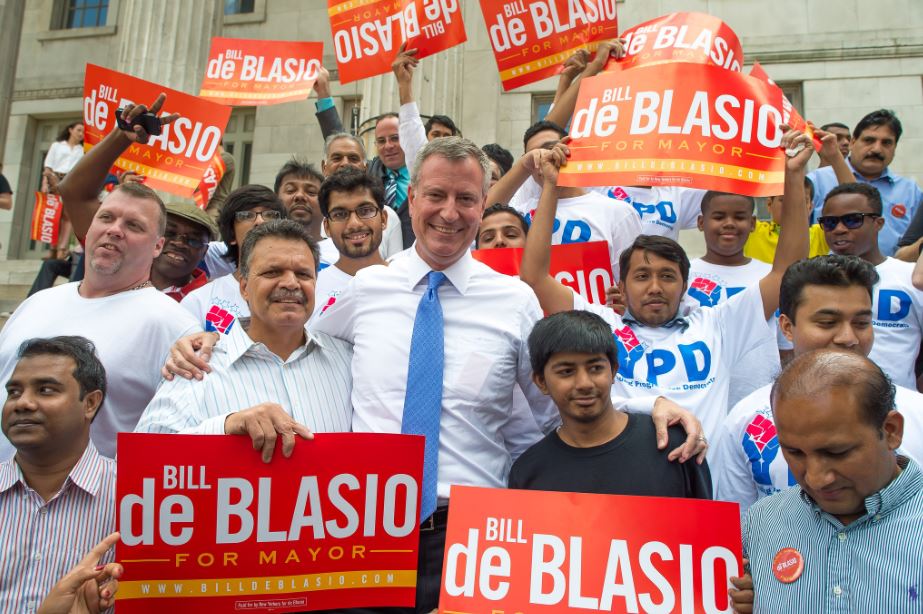The image a candidate projects can have a powerful influence on the campaign’s success in reaching its strategic goals. This excerpt from Online Political Communication highlights how pictures can be used to strengthen the political image and generate interaction and participation
Most of the information we convey is nonverbal. Body language plays a fundamental role in communicating who we are and is much more powerful and immediate than mere words. This is why it is necessary to consider objectives carefully and develop a strategy before producing and selecting photos.
The image a candidate projects can have a powerful influence on the campaign’s success in reaching its strategic goals. Careful consideration of what kind of images should be presented is crucial. A politician who is close to the people? A qualified and capable one? A seasoned professional? A friendly person? What attributes are to be displayed? Strength or openness? Cooperation or leadership? Passion or preparation? What issues are to be highlighted? Will the focus be on young people, seniors, women, human rights?
The photographs selected must reflect these directive decisions. Facial expression, stance, attire, and other people in the picture are all elements that speak far more than is generally understood. A smile or a serious expression, a shirt with the sleeves rolled up or a suit and tie, standing alone or surrounded by university students or residents of a retirement community: all of these represent choices that must be made in light of the message to be communicated.
In any case, it is best to avoid or at least limit the use of classic images of the candidate sitting behind a desk or at a table of speakers or standing, microphone in hand, which reflect and perpetuate the most common political stereotypes. They show little care and attention in preparation and reinforce the primary criticism that citizens level against politicians: they are all talk and no action, producing oceans of words but incapable of effecting real and lasting change.


Photographs, of course, do not obviate action. A photo of the candidate wearing a hard hat at a construction site is hardly sufficient to convince people that he is the man to create new jobs and improve working conditions. There must be daily effort and concrete action leading to tangible results; this is the story that can then be told in images—simple, without dramatic emphasis, and with nothing that smacks of propaganda, which in most people prompts either indifference or outright disgust. A visit to a factory, office, school, or hospital is an opportunity to produce interesting images, ones that capture attention, telling a story of dedication, effort, attention, and interest with clarity and simplicity. Because they avoid the standard clichés, these pictures are seen as new, fresh, different. It is not a question of good photos or bad ones, but rather photos that strengthen or weaken the image you want to project.
A comparison of photos of Obama and Russian president Vladimir Putin illustrates this concept quite clearly. While the American president is shown to be open, approachable, and in touch with the people, the Russian head of state projects strength, toughness, and resolve, accentuating his role as a leader rather than as a member of the community. These are two starkly different political profiles, both of which are reinforced by very different images. The divergence is particularly evident when comparing photos that depict them in similar situations (see Figs. 5.3 and 5.4, and for further consideration, bit.ly/gg2015figures).


Another key element to consider is strategic objectives. Is the aim to get out the vote? To recruit volunteers? Promote donations? The specific goals of the effort must be kept well in mind when producing and selecting images. As an example, photos showing volunteers at work can be used to inspire others to participate in the campaign’s effort (see Fig. 5.5).

There is no need for the politician to be alone in photos; in fact, it is much more interesting and effective to give visibility to people and events that illustrate the results of their work. An administrator might publish a photo of people using a new cycle path; a nonprofit organization could post images of kids taking a course supported by its adopt-a-student-in-Africa program. This communicates the meaning and significance of their action clearly and powerfully. Letting go of the idea that the candidate must be the center of attention in published images is a step that must be taken.
Photos can be accompanied by short texts, political quotations, or messages that call for action. This can give greater visibility to content and clarify the message (see Fig. 5.6).

Photos can also be used to generate interaction and participation. Supporters can be asked to share photos that illustrate the work they are doing for the campaign or invite people to take specific actions. They can also be requested to mark them with hashtags on social networks so that they will be easy to find. These kinds of projects can be launched during public events, asking participants to pose for photos with messages of support for the campaign or inviting celebrities—singers, actors, or athletes—who showed early support for the candidate to do so, then ask other supporters to follow suit (see Figs. 5.7 and 5.8).

An activist shows her support for Obama in response to a request from the campaign for people to publish photos of themselves on their social networking profiles.
This can lead people to participate with a simple gesture that reinforces a sense of sharing a political challenge, encouraging others to join in support of the campaign as well.
***
If you liked this article you might find interesting to read an excerpt from Online Political Communication

